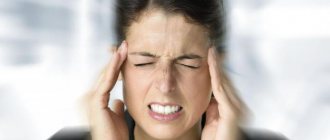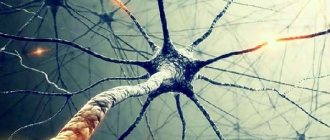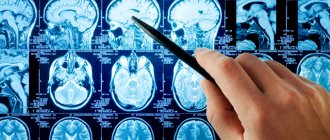Heroin withdrawal (withdrawal) is a set of physical and mental disorders that occur in drug addicts when using heroin. After the last dose of the psychotropic drug wears off, the body begins to demand a new dose. Pain, cramps, nausea and other painful symptoms disappear after taking the drug - this causes a person to constantly be in a state of drug intoxication.
About cannabis and mental disorders
Compared, for example, with heroin, the risk of developing or intensifying all kinds of disorders from cannabis is much higher . It is now known that cannabis can be associated with the following manifestations or worsening of mental disorders:
- development of addiction;
- delirium (delirium tremens);
- cannabis psychosis;
- schizophrenia;
- increased anxiety;
- depression;
- amotivational syndrome.
When talking about cannabis, like other drugs, it is important to clearly distinguish between use, abuse and dependence.
Abuse can lead to physical, mental and/or social problems, the causes of which come directly and exclusively from the use of the drug. At the same time, in the abuse phase, drug use is not necessarily regular - the person retains partial control over the use of cannabis and from time to time he can do without it. In the addiction stage, use has become a daily necessity to continually abuse the drug.
Research (Holmberg, 1981; Bier & Haastrup, 1985; Arseneault et al., 2002; Fergusson et al., 2003) has confirmed that cannabis, especially in large quantities, can cause both delirium tremens and psychosis.
Delirium tremens (delirium) does not last long - from several hours to several days. Although time in this case is a relative concept. A person’s consciousness is extremely foggy: it is difficult to navigate in time and space, he does not recognize acquaintances and does not understand what is happening around him. Delirium tremens is more likely if a person has taken large amounts of THC while sleep-deprived or hungover.
Psychosis differs from delirium tremens in that the ability of analytical thinking works as a sense of reality, that is, the connection with reality is broken or completely lost. Analytical thinking is of little use if you are sitting on the edge of a roof, about to jump off, not knowing your name and the reasons for the situation, although you are quite aware of where you are and what you are about to do. The fact that you don't remember your name is very strange, and if you think about it analytically, it shouldn't be like that. The realization that if you jump off a roof you will probably die is also the result of analytical thinking, but what can you do if, according to your altered sense of reality, jumping from a roof seems more normal and reasonable than sitting on its edge.
A person suffering from psychosis is usually restless, surrounded by unreal hallucinations and sensations in which he unshakably believes. In any case, in such a state a person cannot cope with everyday life. Psychosis lasts longer than delirium tremens - from one to six weeks, but only if the person no longer uses cannabis. If cannabis consumption continues, this condition can last a long time and is difficult to treat. Psychosis often requires hospitalization. Research shows that approximately 10% of those who have smoked marijuana more than once in their life have experienced delirium tremens or psychosis. The risk is directly related to the THC content of cannabis and the frequency of use.
Schizophrenia. Can cannabis also cause schizophrenia in people who do not otherwise have it? The answer is most likely “yes.” In addition, there is evidence that schizophrenia appears several years earlier than average in marijuana smokers. The sooner you start smoking weed, the greater the risk.
Panic attacks. Cannabis can cause panic attacks of varying severity, most commonly occurring in casual users or those who unintentionally take more THC than usual. These attacks can be extremely severe and frightening. It seems to a person that he is losing all control, that he lacks oxygen, that he is about to die or go crazy, etc. A feeling of unreality often arises. Sometimes increased anxiety begins with panic attacks, which requires the intervention of psychiatrists and can no longer be completely cured.
Depression. Cannabis promotes depression. According to studies, cannabis abusers show signs of depression four times more often than non-cannabis users. Depression, in turn, can develop into various psychosomatic disorders, for example, increased anxiety, etc.
Amotivational syndrome. In 1968, the concept of amotivational syndrome was first used. A person who consumes cannabis for a long time becomes indifferent, apathetic, and cannot concentrate on anything for long. he can make plans for the future, but cannot implement them. At the same time, it is difficult for him to get used to new circumstances or cope with difficult situations. His attitude towards life becomes passive. Problems with short-term memory arise; the person cannot remember what he said a minute ago or what just happened. The ability to express oneself and the ability to analyze deteriorates. Attention is weakened, reaction speed and awareness of time in cannabis users in this phase is much worse than in other people. They are often lonely and isolated, but at the same time they cannot stand criticism and believe that others are to blame for their situation, but not themselves. Common position: “Others don’t understand me because I’m so special and don’t belong to this society.” Conversations with them are difficult because they simply do not remember what they just said or what was discussed at all. Of course, they do not associate cannabis with the causes of their anxiety.
Problems with memory and concentration remain, even if a person has given up cannabis many years ago.
Research shows that amotivational syndrome is nothing more than a consequence of long-term cannabis poisoning. The longer a person consumes cannabis and the higher the THC content, the greater the harmful effects. The syndrome is most noticeable in modern industrial countries with a high pace of life and increased social demands on people.
Hormonal balance. Cannabis can disrupt the hormonal balance of both men and women. There is not enough research in this area to accurately estimate the possible harm, but it appears that men are more susceptible to it. In women, cannabis affects the menstrual cycle. It can be assumed that cannabis reduces fertility, especially in men. But there are still too few studies to say this for sure.
www.narko.ee
What is heroin
The opium poppy is considered a storehouse of a large number of narcotic drugs. Once the plants have flowered and dropped their petals, a small box is formed containing a white syrup, similar to a molasses mass. This is what those involved in the distribution of narcotic drugs extract. The dried mass, turning into opium, acquires a brownish color.
In small quantities, opium is not dangerous; it is even included in some medications. A striking example is morphine and codeine. Production residues are used in the synthesis of “herych”.
100 thousand times stronger than heroin. Chinese spice “irretrievably burns your brain”
Acute cerebral edema. This is the cause of the latest deaths: a 24-year-old guy (used the drug with whiskey), a freshman at BSU and a ninth-grader rower. Everyone tried the “brand” with the image of the devil and died from a “swollen” head. Experts explained why spice and stamp dealers have to be caught through Interpol and why those who try the drug throw themselves out the window.
In one of the fatal cases, law enforcement officers seized a “stamp.” It was established that only (!) 0.0234 grams of a synthetic drug were applied to her. This was enough to kill a man. And synthetic poison is distributed in kilograms.
A rower from a Minsk school immediately consumed a third of the “mark,” says Nikolai Karpenkov, . “Mark” was divided into three. The “high” of the drug is slow (you don’t get the high right away. – TUT.BY ). And the guys decided to eat the second “stamp”. Only one of the three ninth-graders managed to consume his share – and he died.” The guy only had a little more than half a mark.
Substances applied to paper (take any paper that absorbs moisture well) or sold in the form of a smoking mixture are considered deadly. Synthetic drugs, says Karpenkov, were created as experimental substances in order to control the enemy army in wartime conditions: “The army would disperse from pleasure, or even better, people would exchange fire due to psychosis.”
Heroin overdose
If an overdose occurs, the patient should be immediately hospitalized in a special drug treatment department so that doctors can provide qualified assistance.
Symptoms of poisoning
These include:
- swelling of the lungs, impaired functioning of the respiratory system;
- lack of ocular response to light;
- increased aggression, development of psychosis;
- hallucinogenic visions;
- diarrhea, vomiting;
- heart muscle failure, feeling tired.
First aid
You should first perform gastric lavage using adsorbents. Heroin is removed from the body using detoxifying compounds that are injected into a vein.
Chinese spice “stamps” instead of bombs
Chemicals come to us from southeastern countries, mainly from China. The synthetic drug is sent to Europe in tons. At least, according to the Ministry of Internal Affairs, in Southeast Asia (China, Myanmar, Thailand, Indonesia) up to 800 tons of synthetic drugs are produced per year, which then go to Europe and other countries.
But just a kilogram entering the country is enough to kill a huge number of people. “How many can you kill with a bomb? Well, about 10 people. And then you send a kilogram... - argues Karpenkov and again reminds about ten-thousandths of a gram: - Just imagine: the effect of a synthetic drug is 100 thousand times stronger than the effect of heroin. From one dose, part of the brain can burn out irrevocably. What remains? Hole".
In China, people are shot for illegally importing, distributing and transporting drugs. So we can’t speed things up at home, they say at the Ministry of Internal Affairs, we need a market. And the drugs are also brought to us.
Today, spice is problem No. 1 in the United States and a big headache in Europe,” says Karpenkov. The specialist compares drugs with pyrotechnics, in the sense that “they are produced in China, but explode here.”
“Substances are supplied in stages, so to speak, belt by belt,” shares the head of the drug control department. “They are immediately delivered to the so-called bases in Russian cities.”
Sometimes artificial drugs are brought to Belarus in the form of ready-made spices and “stamps”. Sometimes in the form of a pure substance (this week law enforcement officers seized more than a kilogram of a synthetic drug), and craftsmen here spray it onto plant materials (tobacco, coltsfoot, etc.) with an aerosol, or dilute the substance and soak a “stamp” in it .
Spice and “brands” are distributed via the Internet. “They take it because it’s cool, creative, and the pictures show sexy girls. In general, they work on teenagers’ complexes,” says Nikolai Karpenkov. Pictures convince boys and girls that spice “brands” are fashionable: “This is the image: rock - sex - drugs.”
They often negotiate a purchase on Skype.
“We do a lot, but drug dealers need a market, and that’s why they invent new formulas of synthetic drugs,” the police say.
The Drug Control Department of the Ministry of Internal Affairs says that 23 websites have been blocked recently, but new ones are constantly appearing: “We contacted Interpol. This is the only way to close 3 sites opened in Denmark, a site in the USA and in Belgium, which sold “brand” spices.
Spice is sold mainly by drug addicts. And college students, students, and schoolchildren buy it. If such a drug addict is not stopped, then he gets his acquaintances addicted to drugs, and the number of addicts continues to multiply. The cost of a dose is only 100-200 thousand Belarusian rubles.
There were cases, the police say, when drugs in Minsk were distributed free of charge near Komarovka and the Main Post Office - they attracted clients.
Detoxification
The goal of detoxification is to provide a safe and comfortable way out of dependence on psychotropic substances. Detoxification should not be considered as the only treatment, but is often useful as a prelude to other forms of treatment. In addition, some patients who undergo detoxification are able to achieve stable abstinence without further treatment according to the protocol. In Australia, detoxification is most often provided to patients with heroin addiction on an outpatient basis. Outpatient detoxification is steadily growing, although not all patients are suitable for this treatment approach.
Clonidine (an alpha-2 adrenergic agonist) helps improve some of the more troubling symptoms of heroin withdrawal. Clonidine is usually used in combination with some other oral medications to provide symptom relief. These drugs include paracetamol, to relieve bone pain, diphenoxylate or loperamide, to reduce diarrhea, and hyoscine, to control abdominal cramps. Benzodiazepines, such as nitrazepam, can be used for short-term treatment of insomnia. A small proportion of patients prescribed clonidine may develop hypotension. Some patients who abruptly stop taking clonidine develop rebound hypertension. Lofexidine, which has many of the properties of clonidine but perhaps fewer cardiovascular side effects, is often prescribed instead of clonidine in Australia.
Relapses after detoxification are very common. Physicians, patients, and patients' families should be prepared for the possibility of relapse and not be discouraged if it occurs. A relapse may indicate both the need for repeated detoxification and a change in treatment approaches.
Each time - a new portion of the brain, “to put it simply, he becomes an idiot”
The narcotic substance in spice or “mark” acts not only on the pleasure center in the brain, but also on others, says the chief narcologist of the Ministry of Health, Ivan Konorazov . At the same time, the brain suffers from a lack of oxygen, and hypoxia is much stronger than from drinking alcohol and smoking, says the specialist.
As a result, with each use, brain cells die: in some people more, in healthier ones - less, in some - cells responsible for speech, in others - for coordination of movements. In the same way, the consequences of consumption are different. “Some people lose their arms or legs, or their reproductive organs,” says the chief narcologist, “some people lose their speech.”
But most often, he says, it's the gray matter that suffers. “Simply put, a person becomes an idiot,” states the doctor. Cells of the heart, lungs, and genitourinary system also die, and a person often becomes disabled. Absolutely everyone who has used it at least once suffers. “A person can no longer be the same as he was. For example, if you take young people who are being treated in psychiatric clinics in Belarus, doctors cannot restore their ability to think,” Konorazov stated.
Causes
The physiology of the development of withdrawal is associated with a disorder of autonomic functions. The reason is that heroin stimulates opioid receptors (in an ordinary person, endorphins do this, but in a drug addict, they stop being produced as unnecessary). If the supply of the narcotic substance stops, then the body begins to become stressed - there are no artificial stimulants, and there are no hormones of its own. As a result, pain, cramps, digestive disorders, cardiovascular disorders, etc. occur.
It is useless to ask a heroin addict to endure withdrawal and not take the drug again. The drug affects the brain, disrupts the production of dopamine, important neurotransmitters responsible for motivation and objective assessment of danger. We can safely say that because of heroin, a drug addict “loses his head,” which is why treatment for drug addiction should be medicinal (to restart the chemical processes in the body that are responsible for adequate perception of reality and behavior).
Heroin addiction
Heroin addiction
– heroin addiction, the most common opium addiction. Distinctive features are the rapid development of mental and physical dependence, severe withdrawal syndrome, as well as the complexity and duration of treatment. Heroin eliminates pain, has a sedative effect, reduces anxiety, causes euphoria and hallucinations, depresses the respiratory, cough and vomiting centers, causes bradycardia, decreased blood pressure and weakened intestinal motility. Possible complications of heroin addiction are overdose, psychosis, hepatitis and HIV infection, disorders of the central nervous system and internal organs.
Heroin addiction is the abuse of heroin. Due to its euphoria and relatively low cost, heroin is the most widely used opioid drug. About 90% of patients who use opiates suffer from heroin addiction. Addiction usually develops in young patients and has a significant impact on life expectancy, as people suffering from heroin addiction often die from accidents, overdose, complications associated with the use of unsterile syringes, and the toxic effects of impurities in poorly purified or “diluted” drugs.
Heroin addiction is a serious medical and social problem. This addiction causes early disability and contributes to the spread of HIV and hepatitis B. Heroin addicts lead an antisocial lifestyle, do not work, create an unbearable atmosphere in the family, sell things from home, commit crimes while “high” or in an attempt to find money for a new dose. Successful treatment requires complex therapy and long-term rehabilitation. Treatment of heroin addiction is carried out by specialists in the field of addiction.
Signs of heroin addiction
Relatives and friends of drug addicts sooner or later begin to suspect that a loved one is captive to heroin addiction. Among the warning signs are:
- detection of suspicious substances and syringes . Heroin is a white powder with a gray-brown tint that has an unpleasant odor and bitter taste. The drug is packaged in foil or small transparent bags tied with string. Often, “newbies” start snorting heroin, in which case you may find rolled up banknotes or similar designs. The addict also uses a spoon or glass vial to prepare the drug. Since the container requires heating, the bottom of the spoon will be burnt by the fire of the lighter. If you find something similar in the pocket or “personal cache” of a loved one, you should be wary;
- presence of injection marks. In most cases, the injection points are located in the cubital fossa. However, we should not forget about the ingenuity of drug addicts. Many people inject themselves into the groin, neck, feet and hands in an attempt to hide their heroin addiction;
- changes in pupils. Heroin addicts have constricted pupils. They can even be difficult to see. In addition, the pupils practically do not react to light. Many addicts are resourceful. To dilate the pupils, various means are used: eye drops, suppositories with belladonna extract. In this case, the pupils may become different sizes, be careful;
- the appearance of a characteristic pharmaceutical odor. This is due to the fact that heroin remains in the blood of an addict for a long time. Poor quality drugs are mixed with various pharmaceutical products;
- behavior change. Heroin addicts are characterized by drowsiness, poor coordination and absent-minded attention. When using the drug, a person begins to itch. The addict’s immunity is weakened, appetite changes, and thinness appears. Drug addicts often feel cold and suffer from infectious diseases and colds.
Human behavior begins to change noticeably. “Secret” friends appear with whom you cannot communicate on the phone in front of everyone. Frequent deceptions of others, lies out of nowhere are very characteristic of a person who is in trouble. In addition, heroin addicts are constantly looking for money. They spend most of their salary on drugs, often in debt and loans. When all resources have been exhausted, they ask loved ones for money under any pretext, not always successfully. Therefore, if things and cash begin to disappear from the house, most likely, a loved one is captive of a terrible addiction and needs urgent help.
Heroin and the development of heroin addiction
Heroin is a semi-synthetic substance from the group of opiates. In laboratory conditions it is made from morphine. In artisanal processing, heroin is sometimes produced from poppy straw, raw opium and other semi-finished products. Pure heroin is a white powder; with a large amount of impurities, the powder becomes brown. Heroin, homemade from semi-finished products, looks like a brown or black tarry substance. Such a drug contains a significant amount of impurities that can cause unpredictable side effects, cause poisoning and provoke the development of dangerous complications.
Heroin was first produced at the end of the 19th century. Initially, the drug was considered safe and was used as a cough medicine. At the beginning of the 20th century, heroin was discovered to be addictive. Measures have been taken to limit its free distribution and use. However, heroin has been widely used in medicine for a long time. Currently, the use of the drug for medical purposes has been almost completely stopped due to the high risk of developing heroin addiction. An exception is palliative treatment of patients suffering from excruciating pain in advanced stages of cancer (in some countries).
Almost all heroin these days is produced illegally and is originally intended to be used as a drug. There are many methods of use: regular inhalation, smoking, ingestion, use of suppositories and suppositories, etc. However, the most popular method among patients suffering from heroin addiction is intravenous administration - the most economical and fastest way to achieve euphoria. Intravenous injections provide a high concentration of heroin in the blood, which reduces the cost of purchasing the drug. The effect occurs within 1-2 minutes.
The speed of action of heroin is ensured due to the lipophilicity of this psychoactive substance. Once in the blood, heroin easily “attaches” to fats and quickly spreads throughout the body. Its action is due to contact with opioid receptors located in the brain, spinal cord and intestines. Normally, these receptors are activated by the “pleasure hormones” endorphins. There are several types of such receptors, which in natural conditions provides a very subtle and precise regulation of states - when exposed to certain endorphins, not all receptors are “turned on,” but only a certain part suitable for contact with a specific endorphin.
Heroin has a relatively low affinity for opioid receptors compared to endogenous endorphins, but it affects all receptors simultaneously. Within a few minutes a person feels warmth, pleasant relaxation, calm and euphoria. During the first use, the narcotic effects of heroin may be absent or mild. The reason for repeated use is usually curiosity, a desire to participate in the “fun” along with other members of the group, and active persuasion from dealers, who often sell the first doses at a reduced price in order to “get the next buyer hooked” on heroin.
Narcotic effects usually become clearly noticeable after 2-3 doses. This amount of use is usually sufficient for the development of heroin addiction. Gradually, tolerance to heroin increases; to achieve the desired effect, a patient with heroin addiction needs more and more of the drug. Just a few hours after taking the drug, the first withdrawal symptoms appear, prompting the patient to use it again.
After some time, the life of a person suffering from heroin addiction turns into an endless alternation of euphoria and a state of discomfort from which one must immediately get out. This, as well as increased tolerance, from time to time prompts a heroin addict to “quit.” During withdrawal, alcohol and other psychoactive substances are often used to facilitate withdrawal, which can ultimately lead to the development of polydrug addiction. Due to the combination of powerful physical and mental addiction, curing heroin addiction is a complex, lengthy process that requires high professionalism of doctors, well-thought-out conditions for rehabilitation and sufficient motivation of the patient.
How and with what to remove
You can try to relieve a heroin addict from addiction at home if the experience is short and the withdrawal syndrome is not accompanied by life-threatening attacks. When the withdrawal symptoms are too severe, the condition can only be alleviated with the help of antidotes, detoxification, and drug treatment in a hospital inpatient setting.
It is important to understand that self-treatment for heroin addiction will never be as effective as therapy in a drug treatment clinic. Conversations with relatives are no substitute for sessions with a qualified psychotherapist, and medications from a home medicine cabinet are not comparable to serious medications that only doctors prescribe.
At home
It will not be possible to relieve withdrawal symptoms on your own without medication - you can only wait it out at home, limiting the addict from any opportunity to get and take heroin. But not everyone is able to keep a person locked up for more than 2 months, and watching him suffer during abstinence is too difficult (sometimes even the relatives themselves cannot stand it and give drugs just to relieve the symptoms).
At home, you can try to help the addict a little with medications and herbal remedies. You can make it easier to survive heroin withdrawal syndrome:
- Daily intake of Karsil and Succinic acid - the drugs activate the liver and help quickly get rid of heroin residues.
- A large amount of water (even if this makes the drug addict vomit).
- Absorbing drugs like Activated Charcoal (they will not help you recover from withdrawal immediately, but will only improve the condition slightly).
- Green tea, infusion with chamomile, St. John's wort - these folk remedies slightly calm the nervous system, relieve increased anxiety, and cope with insomnia.
- Medicines like Loperamide that relieve gastrointestinal disorders.
Important: before giving a drug addict any drug for withdrawal, you must read the description of side effects and contraindications. There are medications that cannot be combined with opioids (heroin is one of them) and can cause serious consequences.
You should not try to suppress withdrawal symptoms on your own with the help of other stimulants, tranquilizers, sleeping pills, or alcohol. They do not cause withdrawal symptoms, but only develop polydrug addiction (addiction to several substances at once).
Treatment in the clinic
Inpatient drug treatment centers help relieve heroin withdrawal and provide rehabilitation. The price of such a service is from 120,000 rubles. But you shouldn’t skimp on such an issue as eliminating withdrawal symptoms, since the success of the entire treatment depends on this.
Heroin withdrawal in the clinic is stopped through UBOD - rapid detoxification, carried out under anesthesia and involving the administration of Naltrexone (a specific antagonist of opioid drugs). If the experience is long and the withdrawal symptoms are severe, then under the supervision of doctors the patient is given Suboxone or Subutex. They have similar effects to heroin, but are less dangerous to health. The dosage of this medication is reduced daily, which allows the body to gently begin to function at full capacity again. To relieve withdrawal symptoms, doctors give heroin addicts:
- analgesics, NSAIDs (Ibuprofen, Naproxen);
- antihistamines (Tavegil, Diphenhydramine);
- drugs to normalize intestinal function (Loperamide);
- antihypertensive drugs (clonidine);
- medications for mental disorders (Valium).
After stopping the physical signs of withdrawal, measures are taken to prevent relapses - it is necessary to eliminate the psychological symptoms of withdrawal syndrome. To do this, psychotherapists conduct sessions with the drug addict - they help restore faith in themselves, teach them to enjoy life without heroin.
Consequences and prognosis: is it possible to die?
You shouldn’t trust advice like: “When quitting heroin, you don’t need to do anything, you should just wait out the withdrawal.” This is a mistake, because without help, a drug addict risks dying during the abstinence period. Death most often occurs due to pathologies of the cardiovascular system (high blood pressure, which threatens stroke or heart attack).
The mental state of a heroin addict is also dangerous. During the withdrawal period, he is susceptible to severe depression - according to statistics, 80% of heroin users experiencing withdrawal think about suicide.
Withdrawal is not the only thing that threatens the life of a drug addict in the beginning. Long-term use of heroin often makes a person disabled - pathologies of the heart, liver, kidneys, and mental disorders occur. This can only be prevented by timely treatment. At the first sign of psychotropic substance use, relatives should try to convince the drug addict to overcome the deadly habit. You should not lecture, threaten, scold, you need to show maximum patience and care. If this does not help, then you should seek help from a narcologist.
Symptoms of heroin addiction
A noticeable effect occurs within 1-2 minutes after intravenous administration of heroin. A patient with heroin addiction feels warmth spreading throughout his body. He feels euphoria, peace, extraordinary pleasure (“high”), which in strength, brightness and richness, according to some drug addicts, resembles a sexual orgasm. After some time (from several minutes to half an hour or more), the pronounced euphoria is replaced by relaxation (“freezing”). After another hour, the effect of the drug weakens, and within 3-5 hours it completely stops.
Changes in mental state when administered heroin are accompanied by a number of physiological reactions of the body. The pupils of a patient with heroin addiction constrict, body temperature drops, and metabolic processes slow down. There may be a feeling of dryness in the eyes, mouth and nasopharynx. The level of secretory activity of the gastric and intestinal mucosa decreases. The tone of the sphincters and smooth muscles increases, which in some lung diseases can cause bronchospasm. Longitudinal intestinal peristalsis is weakened, and transverse peristalsis is enhanced. Food moves more slowly through the gastrointestinal tract. The amount of urine produced decreases.
With heroin addiction, hormonal levels change and the functioning of various organs and systems is disrupted. Bradycardia occurs. Abnormal bowel movements become habitual and permanent. In men suffering from heroin addiction, potency decreases and various problems appear in the sexual sphere. Women experience irregular menstruation. Mood changes: in the absence of physical and mental discomfort, patients with heroin addiction usually show compliance and complaisance, but when the first signs of withdrawal syndrome appear, they become aggressive and irritable.
A dangerous complication of heroin addiction is overdose. At first there is drowsiness. In severe cases, disturbances of consciousness up to coma are possible. There is a constriction of the pupils; as the condition worsens, the pupils dilate. There is a decrease in blood pressure, bradycardia and decreased breathing. Death from an overdose in heroin addiction can occur from severe respiratory disorders due to depression of the respiratory center, heart failure, pulmonary edema and respiratory distress syndrome. During recovery from drug intoxication, convulsions and psychosis may occur. Psychosis in heroin addiction can be accompanied by delusions, hallucinations, affective disorders and deterioration of motor coordination.
A characteristic feature of heroin addiction is severe withdrawal syndrome (withdrawal). The duration of abstinence ranges from 3 days to 2 weeks. Withdrawal syndrome in heroin addiction occurs in four stages. At the first stage (8-12 hours after withdrawal), a runny nose, sneezing, yawning, lacrimation and dilated pupils appear. A patient with heroin addiction feels dissatisfaction and increasing mental stress. The second stage (30-36 hours after withdrawal) is accompanied by weakness, sweating and chills, followed by a feeling of heat. Yawning, sneezing and lacrimation intensify, causing discomfort in the muscles.
At the third stage (40-48 hours after withdrawal), all signs of withdrawal intensify, and muscle pain is added to them. Sometimes convulsions appear. A patient with heroin addiction experiences an irresistible desire to take the drug. Tension and anger are replaced by a feeling of hopelessness. The fourth stage (starting from the 3rd day) is manifested by dyspepsia (vomiting, abdominal pain and frequent bowel movements). The severity of the withdrawal syndrome is such that patients with a long history of heroin addiction cannot tolerate it on their own. Sometimes hysterical reactions are observed, designed to gain the sympathy of others. During withdrawal symptoms, a heroin addict may commit suicide or harm others. Possible exacerbation of somatic pathology.
How to take heroin
The drug is taken by injection. It can also be inhaled, smoked or chewed. It seems to an inexperienced drug addict that inhaling powder through the nasal passages is harmless. Actually this is not true.
Some wrap the “gerych” in foil, burn it while sniffing the smoke, or roll up a “roll-your-own” cigarette, set it on fire and smoke.
After a certain time, this becomes not enough for the body and experienced drug addicts recommend that beginners experience a true high using the subcutaneous injection option. Direct injections are dangerous, since frequent injections destroy the veins.
Many drug addicts use small insulin syringes, which are intended exclusively for injections under the skin. Their use is fraught with danger. The powder solution of the drug does not always pass through the thin hole of the needle, starting to foam. If the resulting bubbles get into the heart, the person’s chances of survival become zero.
There is another danger of intravenous heroin injection - viral diseases transmitted by contaminated blood.
Treatment and prognosis for heroin addiction
Treatment of heroin addiction is carried out by narcologists. A patient suffering from heroin addiction is hospitalized in the drug treatment department. In case of overdose, naloxone is administered, which blocks opioid receptors. Detoxification is carried out: the stomach is washed, sorbents are prescribed, plenty of fluids are given, saline solutions are administered intravenously, and urination is stimulated. For psychosis, sedatives and antipsychotic drugs are used.
Relief of withdrawal syndrome in heroin addiction can be carried out both by the classical method and by ultra-fast opioid detoxification. Classic detoxification lasts several days, ultra-fast detoxification lasts several hours. Even in the absence of obvious signs of withdrawal, the craving for the drug, accompanied by some physical discomfort, can persist for about six months. During this period, patients with heroin addiction are often prescribed substitution therapy with methadone, apomorphine and other drugs are used.
When a patient suffering from heroin addiction is highly motivated, naltrexone is used, which eliminates the effects of heroin and makes it impossible to achieve euphoria when taking the drug. The drug is available in the form of tablets, intravenous solutions or a coding implant. Treatment measures for heroin addiction are complemented by individual and group psychotherapy, as well as measures for the social rehabilitation of a patient with heroin addiction. People suffering from heroin addiction are recommended to completely change their social environment (long stay in a rehabilitation center or, if this is not possible, moving to another city).
The prognosis for heroin addiction depends on the patient’s experience and level of motivation. A cure is possible, but it requires great effort on the part of doctors, relatives and the patient himself. Aggravating circumstances for heroin addiction are severe social maladjustment, HIV, hepatitis B and some other diseases caused by drug use. Polydrug addiction is considered especially unfavorable, in which the patient develops a mixed physical dependence on heroin and another psychoactive substance.
www.krasotaimedicina.ru
Consequences of heroin addiction
Heroin addiction leads to serious health problems and rapid and intense wear and tear of the body. Toxic breakdown products of opiates affect vital systems, including the brain and heart. In addition, drug addicts often purchase heroin of low quality, which contains many harmful additives.
People addicted to heroin often suffer from:
- cardiovascular diseases;
- weakened immune system;
- infectious diseases;
- kidney and liver diseases;
- damage to the nervous system and psyche;
- arthritis, psoriasis;
- pneumonia and tuberculosis;
- HIV and AIDS;
- hepatitis B, C, D;
- toxoplasmosis;
- abscesses if injecting drugs;
- infertility.
The most dangerous consequence of heroin addiction is death. Indeed, due to the development of tolerance to the drug, a person constantly increases the amount of heroin consumed. This often ends in complete exhaustion of the body, overdose and death.
What to Expect from Heroin Withdrawal
If a person has been using heroin for some time or is already addicted, they need to know what to expect after stopping the drug during withdrawal.
Once a person has become addicted to heroin, withdrawal symptoms become an integral part of their life. It can also occur after taking several doses of the drug. Heroin highs can vary in duration and intensity. Typically, withdrawal symptoms begin 6-12 hours after the last dose, with a peak on days 1-3, and a gradual decline on days 5-7. However, some drug addicts even experienced weeks or months of withdrawal, a time called the post-acute withdrawal period.
Withdrawal syndrome occurs individually in each person, but there are still some common features that can be identified.
How long do heroin addicts live?
The average life expectancy of heroin addicts is from 5 to 15 years from the moment they start using drugs. Early mortality is associated with the destructive effects of heroin and the high risk of overdose due to rapidly developing tolerance.
Heroin addicts rarely live past 30. Most of them die due to overdoses and related diseases. Some end up in prison by committing crimes and selling drugs. Only a few manage to pull themselves together and seek professional drug treatment help.
Heroin withdrawal and fever
Fever is an increase in body temperature. A person's normal body temperature may depend on individual parameters and factors such as time of day, menstrual cycle, etc. On average, a temperature of 37.2 – 37.5 C in an adult is considered febrile. Fever is the body's way of fighting illness or infection, but during withdrawal it no longer serves a good purpose, which means it must be fought. You should immediately call an ambulance if your body temperature rises to 40 C. It needs to be brought down, especially if the person has heart disease, anemia, diabetes, or HIV.
Consequences of heroin use
After taking several doses, the addict becomes dependent on the powder.
And such a person is not worried about the inevitable consequences, although he:
- immunity weakens;
- teeth begin to crumble, gum inflammation occurs;
- sweat appears, itching appears;
- stool is disturbed;
- appetite worsens;
- Libido decreases, impotence develops;
- memory becomes weaker;
- motor function deteriorates;
- A rash appears on the skin of the face.
Buprenorphine
This partial opioid agonist is taken sublingually because it has a high metabolic rate when taken orally. This drug is widely used in France and some other countries. Results from use in general are generally comparable to a methadone program, but each drug has its own advantages (and some disadvantages). Buprenorphine can be taken every other day.
The risk of overdose with buprenorphine is minimal, but heroin addicts on high doses may experience some withdrawal symptoms. Although buprenorphine is more expensive than methadone, it is nevertheless preferable for detoxification as it causes much less euphoria.
Intravenous methadone administration
Intravenous methadone has been used in the UK for decades, although its effectiveness is unclear. Drug therapy is quite attractive to patients and, to a certain extent, curbs the huge number of heroin addicts. Clinical studies show that agonist treatments are safe, effective, and cost-effective. The range of pharmacotherapeutic options for managing heroin dependence in Australia is currently expanding. Demand for all types of treatment (especially pharmacological treatments) for heroin addiction greatly exceeds supply.












